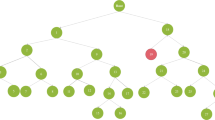Abstract
Extracting operation cycles from the historical reading of sensors is an essential step in IoT data analytics. For instance, we can exploit the obtained cycles for learning the normal states to feed into semi-supervised models or dictionaries for efficient real-time anomaly detection on the sensors. However, this is a difficult problem due to this fact that we may have different types of cycles, each of which with varying lengths. Current approaches are highly dependent on manual efforts by the aid of visualization and knowledge of domain experts, which is not feasible on a large scale. We propose a fully automated method called CycleFootprint that can: 1) identify the most relevant signal that has the most obvious recurring patterns among multiple signals; and 2) automatically find the cycles from the selected signal. The main idea behind CycleFootprint is mining footprints in the cycles. We assume that there should be a unique pattern in each cycle that shows up repeatedly in each cycle. By mining those footprints, we can identify cycles. We evaluate our method with existing labeled ground truth data of a real separator in marine application equipped with multiple health monitoring sensors. 86% of cycles extracted by our method match fully or with at least 99% overlap with true cycles, which sounds promising given its unsupervised and fully automated nature.
Access this chapter
Tax calculation will be finalised at checkout
Purchases are for personal use only
Similar content being viewed by others
References
Fanaee-T, H., Oliveira, M.D., Gama, J., Malinowski, S., Morla, R.: Event and anomaly detection using tucker3 decomposition. arXiv preprint arXiv:1406.3266 (2014)
Fu, T.C.: A review on time series data mining. Eng. Appl. Artif. Intell. 24(1), 164–181 (2011)
Jin, X., Wang, Y., Chow, T.W., Sun, Y.: MD-based approaches for system health monitoring: a review. IET Sci. Measur. Technol. 11(4), 371–379 (2017)
Jin, X., Zhao, M., Chow, T.W., Pecht, M.: Motor bearing fault diagnosis using trace ratio linear discriminant analysis. IEEE Trans. Ind. Electron. 61(5), 2441–2451 (2013)
Keogh, E., Chakrabarti, K., Pazzani, M., Mehrotra, S.: Dimensionality reduction for fast similarity search in large time series databases. Knowl. Inf. Syst. 3(3), 263–286 (2001)
Laskov, P., Düssel, P., Schäfer, C., Rieck, K.: Learning intrusion detection: supervised or unsupervised? In: Roli, F., Vitulano, S. (eds.) ICIAP 2005. LNCS, vol. 3617, pp. 50–57. Springer, Heidelberg (2005). https://doi.org/10.1007/11553595_6
Lin, J.: Finding motifs in time series. In: Proceedings of Workshop on Temporal Data Mining, pp. 53–68 (2002)
Torkamani, S., Lohweg, V.: Survey on time series motif discovery. Wiley Interdisc. Rev.: Data Mining Knowl. Discov. 7(2), e1199 (2017)
Yeh, C.C.M., et al.: Matrix profile i: all pairs similarity joins for time series: a unifying view that includes motifs, discords and shapelets. In: 2016 IEEE 16th International Conference on Data Mining (ICDM), pp. 1317–1322. IEEE (2016)
Yeh, C.-C.M., et al.: Time series joins, motifs, discords and shapelets: a unifying view that exploits the matrix profile. Data Mining Knowl. Discov. 32(1), 83–123 (2017). https://doi.org/10.1007/s10618-017-0519-9
Author information
Authors and Affiliations
Corresponding author
Editor information
Editors and Affiliations
Rights and permissions
Copyright information
© 2020 Springer Nature Switzerland AG
About this paper
Cite this paper
Fanaee-T, H., Bouguelia, MR., Rahat, M., Blixt, J., Singh, H. (2020). CycleFootprint: A Fully Automated Method for Extracting Operation Cycles from Historical Raw Data of Multiple Sensors. In: Gama, J., et al. IoT Streams for Data-Driven Predictive Maintenance and IoT, Edge, and Mobile for Embedded Machine Learning. ITEM IoT Streams 2020 2020. Communications in Computer and Information Science, vol 1325. Springer, Cham. https://doi.org/10.1007/978-3-030-66770-2_3
Download citation
DOI: https://doi.org/10.1007/978-3-030-66770-2_3
Published:
Publisher Name: Springer, Cham
Print ISBN: 978-3-030-66769-6
Online ISBN: 978-3-030-66770-2
eBook Packages: Computer ScienceComputer Science (R0)




